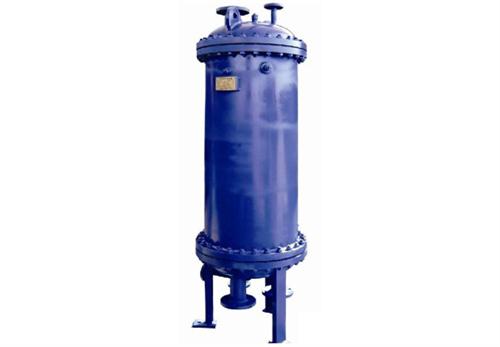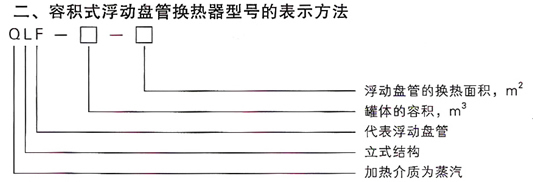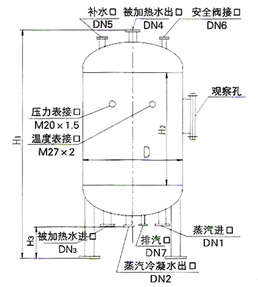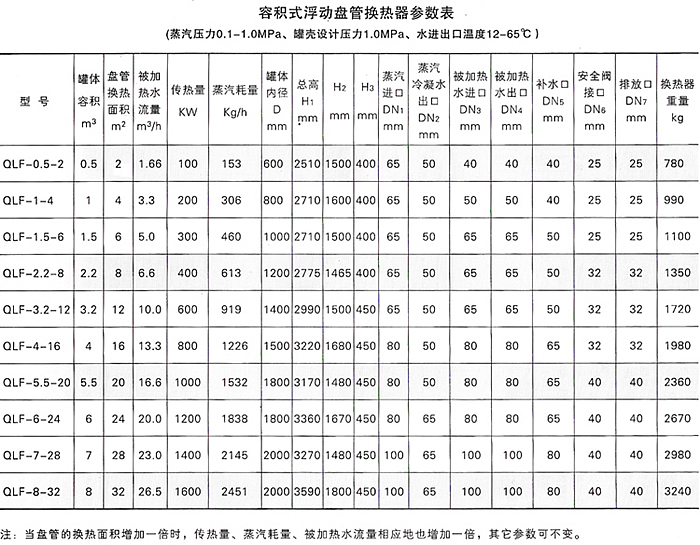


I. product overview
The floating coil heat exchanger has the structure that a tank with a certain volume is equipped with multiple heat exchange tubes bent into a spiral shape by copper tubes, so-called floating coils. Steam is introduced into the heat exchange tubes to heat the water in the tank. When steam enters the coil, under the impact of steam pressure and thermal expansion, the coil will produce a certain amount of bending and stretching floating deformation and a little vibration, which is the main feature of the floating coil heat exchanger. Because it has a certain water volume, the temperature of water changes steadily, and it is suitable for bathing or other domestic water. The tank of volumetric floating coil heat exchanger is generally carbon steel or stainless steel, and the tank is generally vertical.
The steam pressure introduced into the coil is 0.1-1.0Mpa, the working pressure of shell-side water at 120-200℃ is generally ≤1.0Mpa, the inlet temperature of water is about 12℃, and the outlet temperature of water is about℃.

III. Parameter Table of Volumetric Floating Coil Heat Exchanger
The selection of volumetric floating coil heat exchanger is mainly based on the flow of water. The flow of water in the table refers to the working condition of continuous water supply. When water supply is interrupted, the model of heat exchanger can be appropriately reduced. According to the working conditions and requirements of users, the heat exchange area of the coil can be appropriately increased or decreased on the basis of a certain type of tank. The bearing pressure of the tank volume is generally 1.0Mpa, and the pressure level of the tank can be increased according to the working conditions and requirements of users.

IV. Installation and Use of Volumetric Floating Coil Heat Exchanger
1. a safety valve shall be installed at the safety valve opening of the positive displacement floating coil heat exchanger, and the opening pressure of the safety valve can be adjusted to 0.8-1.0Mpa ..
2. If the automatic temperature control device is adopted, the user can choose to install a self-operated temperature control valve or an electric regulating valve. The valve is installed at the steam inlet, and the temperature sensor is installed at the outlet of the heated water. When the outlet water temperature exceeds the predetermined control temperature, the temperature control valve will automatically reduce the opening of the valve and the steam intake.
3. Do not add a steam trap at the steam condensate outlet, so that the condensate can be discharged smoothly, so as to avoid water accumulation in the heat exchange coil, which will affect the heat exchange.
4. Drain the internal water when you stop using it.
